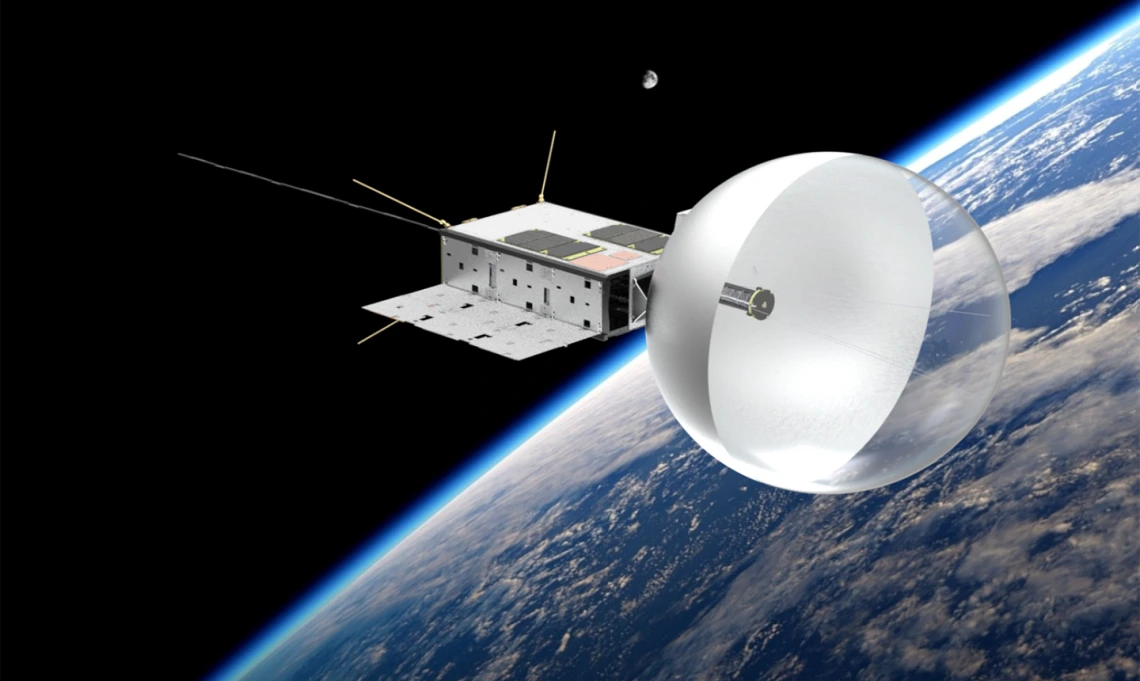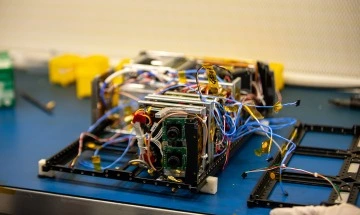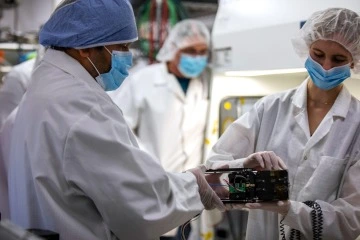CatSat in Orbit
Students ‘stretch its legs’ before data collection.

CatSat will orbit Earth about every 95 minutes for the next year, studying radio transmission in the ionosphere and testing an ultralight inflatable antenna. Image: Aman Chandra/FreeFall Aerospace
Shae Henley breathed a sigh of relief when CatSat finally sent signals back to Tucson in late July 2024.
The aerospace engineering master’s student has worked on the student-built satellite since her first year as an undergraduate at the U of A.
“It has been the most helpful thing at the university,” said Henley. “Classes give you a solid math and physics background but not necessarily hands-on experience.”

CatSat, a small satellite also known as a CubeSat, is roughly the size of a large cereal box.
TaMya Reliford, University of Arizona
The mission is part of NASA’s CubeSat Launch Initiative to foster growth in the small-sat industry. U of A tech spinoff FreeFall Aerospace and Tucson based Rincon Research are partners on the project.
CatSat left Earth onboard the Firefly Aerospace Alpha rocket on July 3. But as Henley watched the rocket’s plume across the sky in Tucson, she and the dozen or so undergraduate and graduate students who began building CatSat over four years ago had no way of knowing the wait still was not over.
U.S. Space Force tracking accounted for seven of the eight nanosatellites scheduled for deployment from the spacecraft. But not a sound from CatSat. The team listened for signals from the tiny craft for nearly two weeks.
Finally, as the sun dipped below the horizon on July 15, the team began receiving telemetry data, and Firefly confirmed the satellite’s deployment.
Aerospace graduate student Adrien Bouskela said they have started “stretching its legs, finding out what it can do and how we can improve it.”
Bouskela, altitude and orbital control systems lead, supervises students who fly the satellite as it passes over Tucson – twice in the morning and twice at night. During these passes, they send photo commands.
“With the pictures, we are troubleshooting – making sure we’re pointing the correct direction and that our frames are good for future data recordings,” said Henley, also mission flight director.

Prior to launch, Aman Chandra and Shae Henley carefully examine the CubeSat hardware in a cleanroom to minimize contamination.
TaMya Reliford, University of Arizona
Soon, the students will embark on CatSat’s main goals: to collect ionospheric data and test an inflatable antenna.
Amateur, or ham, radio enthusiasts take advantage of this charged layer of the atmosphere to broadcast information throughout the world. The team hopes
to provide information that will improve radio transmissions.
The inflatable antenna is expected to dramatically increase the total data return, including high-definition imagery, and the overall effectiveness of CubeSats and other small satellites.
“It is nice to have a mission that is by students, for students, because everyone is learning and transmitting knowledge,” Bouskela said.

